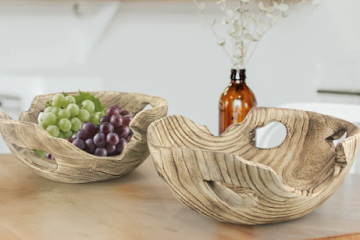Introduction to Wall Tapestry
Wall tapestries have been a significant form of artistic and cultural expression for centuries. Originating from ancient civilizations, these intricate textile artworks serve multiple purposes, from storytelling and documenting historical events to adding aesthetic value to interiors. Tapestries have evolved in style and technique over the years, but their fundamental appeal remains unchanged. They offer a unique blend of art, history, and craftsmanship that few other decorative items can match. Today, wall tapestries are cherished not only for their beauty but also for their ability to bring warmth and character to any space.
Historical Significance and Evolution
The history of wall tapestries dates back to ancient Egypt and Greece, where they were used to depict scenes of mythology, daily life, and nature. During the Middle Ages, tapestries gained prominence in Europe as symbols of wealth and power. Nobles and royalty adorned their castles with these elaborate works to showcase their status and sophistication. The famous Bayeux Tapisserie murale, which chronicles the Norman Conquest of England, is a prime example of how tapestries were used to record and celebrate historical events.
Renaissance and Baroque periods saw further refinement in tapestry art, with intricate designs and sophisticated weaving techniques. Artists like Raphael and Rubens created designs for tapestries, elevating them to the realm of high art. The Industrial Revolution brought about mass production, making tapestries more accessible to the general public. Despite these changes, traditional handwoven tapestries remained highly valued for their craftsmanship and artistic merit.
Artistic Techniques and Styles
Wall tapestries are created using various techniques, each contributing to their unique texture and appearance. The most common method is the warp and weft weaving technique, where vertical threads (warp) are interwoven with horizontal threads (weft) to create a detailed image. This method allows for intricate designs and vibrant colors, making each tapestry a work of art.
Another popular technique is needlepoint, which involves stitching on a canvas using colored threads. This method is often used for smaller, more detailed tapestries. Appliqué, where fabric pieces are sewn onto a larger background fabric, is also a common technique, especially for creating tapestries with three-dimensional effects.
The styles of wall tapestries vary widely, from traditional European scenes of landscapes and historical events to modern abstract designs. Tapestries can feature religious themes, mythical creatures, floral patterns, and even contemporary art. This versatility allows them to fit into various interior design styles, from classic and rustic to modern and eclectic.
Decorative and Functional Uses
Wall tapestries are versatile decorative pieces that can transform the ambiance of any room. Their large size and detailed designs make them perfect focal points in living rooms, bedrooms, and even offices. Tapestries add a sense of depth and texture to walls, creating a cozy and inviting atmosphere. They can also be used to define spaces within a room, such as hanging behind a sofa or bed to create a visual anchor.
In addition to their decorative appeal, tapestries offer practical benefits. They can help insulate a room, providing warmth during colder months. The thick fabric also acts as a sound absorber, reducing echoes and improving acoustics in large or open spaces. Some tapestries are designed to be portable, allowing them to be easily moved and displayed in different locations.
Wall tapestries are also popular in cultural and religious settings. Many churches and temples use tapestries to depict religious scenes and symbols, enhancing the spiritual ambiance of the space. In museums and galleries, historical tapestries are displayed as important cultural artifacts, providing insight into the artistic and social practices of past civilizations.
Modern Revival and Contemporary Trends
In recent years, there has been a resurgence of interest in wall tapestries as part of the broader trend towards artisanal and handcrafted home decor. Modern designers and artists are exploring new materials, techniques, and styles, blending traditional craftsmanship with contemporary aesthetics. This has led to a wide variety of tapestry designs that cater to diverse tastes and preferences.
One notable trend is the use of digital technology in tapestry creation. Digital looms and printing techniques allow for precise and complex designs that were previously difficult to achieve. This innovation has expanded the possibilities for tapestry art, making it accessible to a new generation of artists and collectors.
Sustainability is another key trend in the modern tapestry revival. Many artists are using eco-friendly materials and sustainable practices to create their works. This aligns with the growing consumer demand for environmentally conscious products and adds an ethical dimension to the appeal of tapestries.
In interior design, tapestries are being used in innovative ways beyond traditional wall hangings. They are incorporated into furniture designs, used as room dividers, and even featured in outdoor spaces. This versatility underscores the timeless appeal of wall tapestries and their ability to adapt to changing trends and lifestyles.
Conclusion: The Enduring Legacy of Wall Tapestries
Wall tapestries have a rich history and enduring appeal that transcend time and culture. From their origins in ancient civilizations to their modern-day revival, these textile artworks continue to captivate with their beauty, craftsmanship, and versatility. Whether used as decorative pieces, historical artifacts, or practical furnishings, tapestries offer a unique way to enhance and personalize living spaces.
As we embrace the values of craftsmanship, sustainability, and artistic expression, wall tapestries stand out as timeless treasures that connect us to our past while enriching our present. Their ability to tell stories, evoke emotions, and transform spaces ensures that they will remain cherished and celebrated for generations to come.




